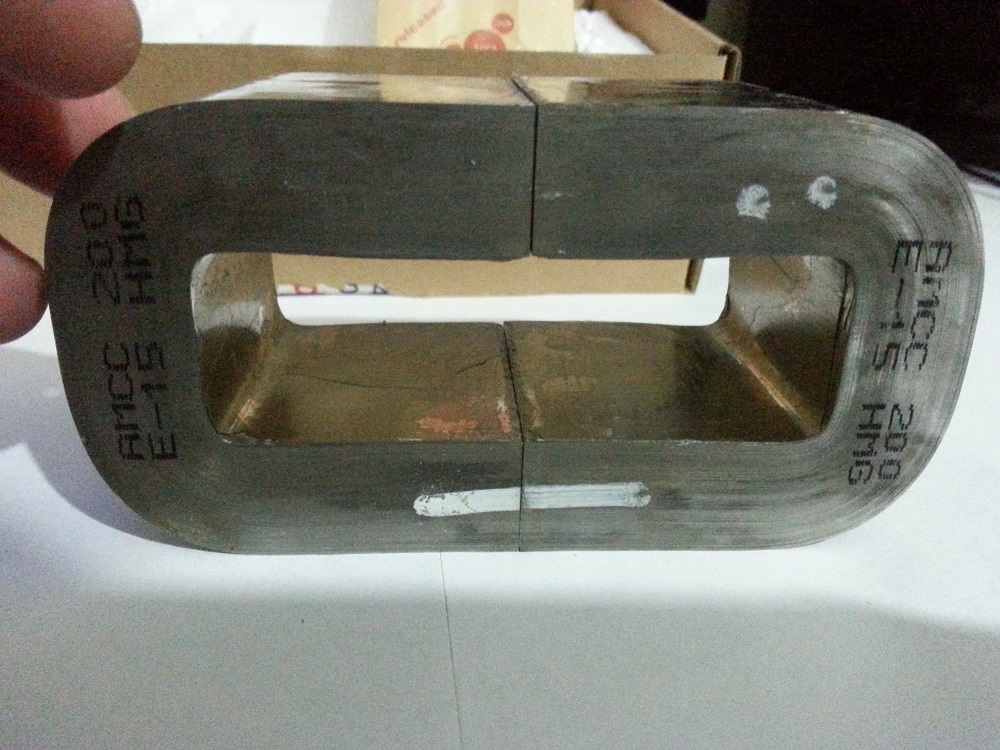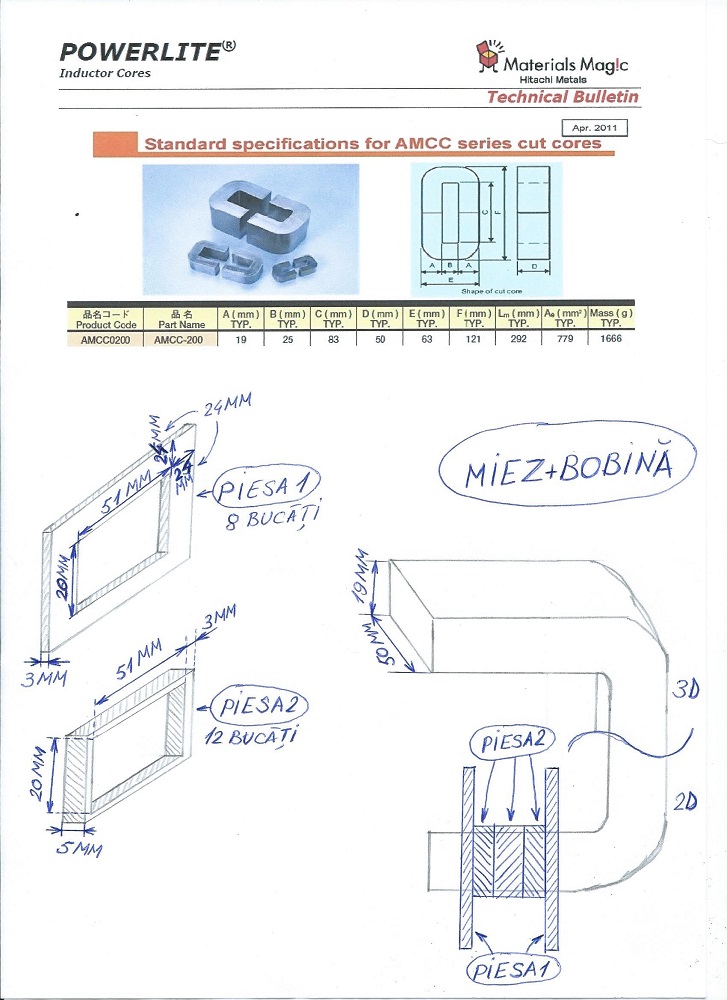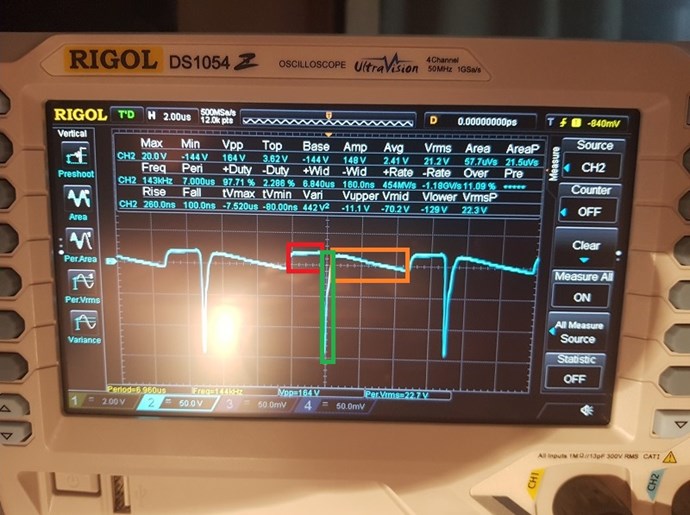@Vidura, you're welcome, that's why I'm here to share my work and also to learn. And you're right, my previous measurements are wrong, after I removed that broken MOSFET from driver I designed the measurement scheme wrong then I just followed the scheme.
I just did the measurements again and I'm gonna post the info below.
Thanks for the idea about duty-cycle and frequency, I'll try another combination of these parameters to lower down the temperature in the MOSFET driver's radiator 'cause right now I can run tests for about 5-7 minutes before needing to shotdown and let that radiator to cool down. I was already thinking to put an 12V cooler inside the box, I already have a constant voltage source inside powering the LED indicator. Nice idea, thanks !
@UndisclosedMember, please disregard the measurements section from my previous post, I'm adding updated measurements below.
So I connected the yellow probe to the MOSFET: probe's ground to the source and the probe itself to the gate:

This measurement's schema is the following:
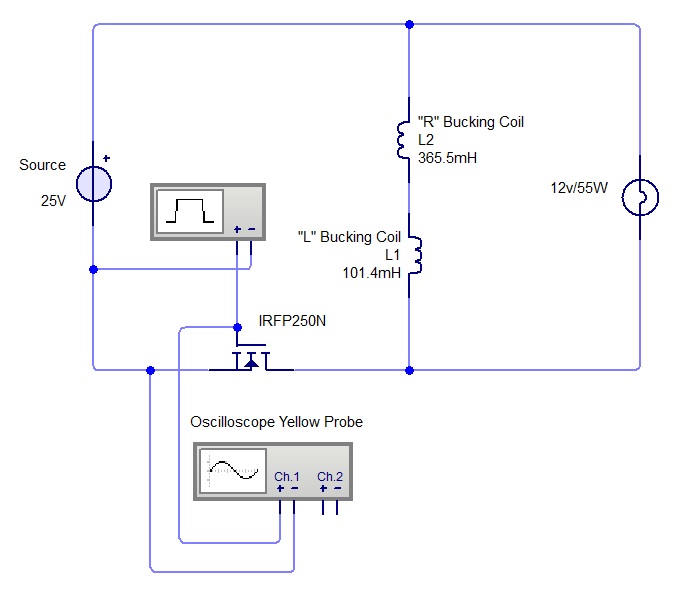
The MOSFET driver's switch is off so ZPM is not powered but the signal generator is on and is already sending signal to the MOSFET which is shown by the oscilloscope:
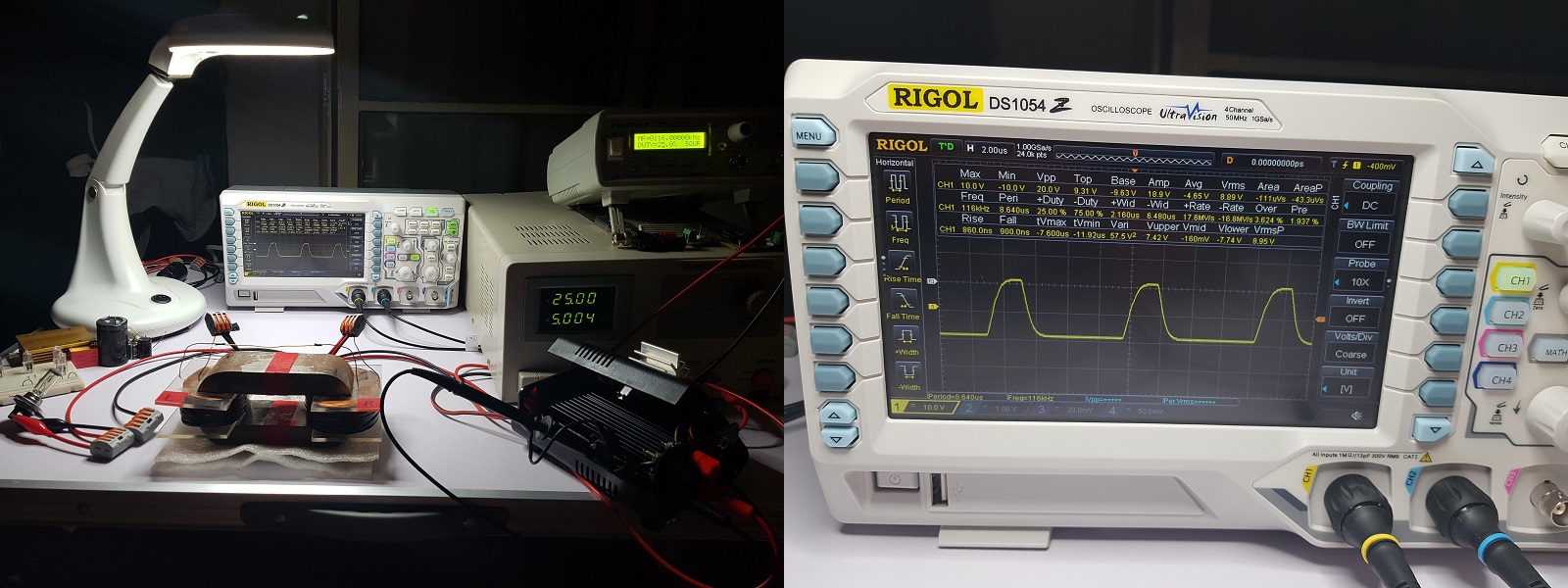
Then after turning MOSFET driver's switch on the ZPM is powered on and the readings from the MOSFET are in the next image:
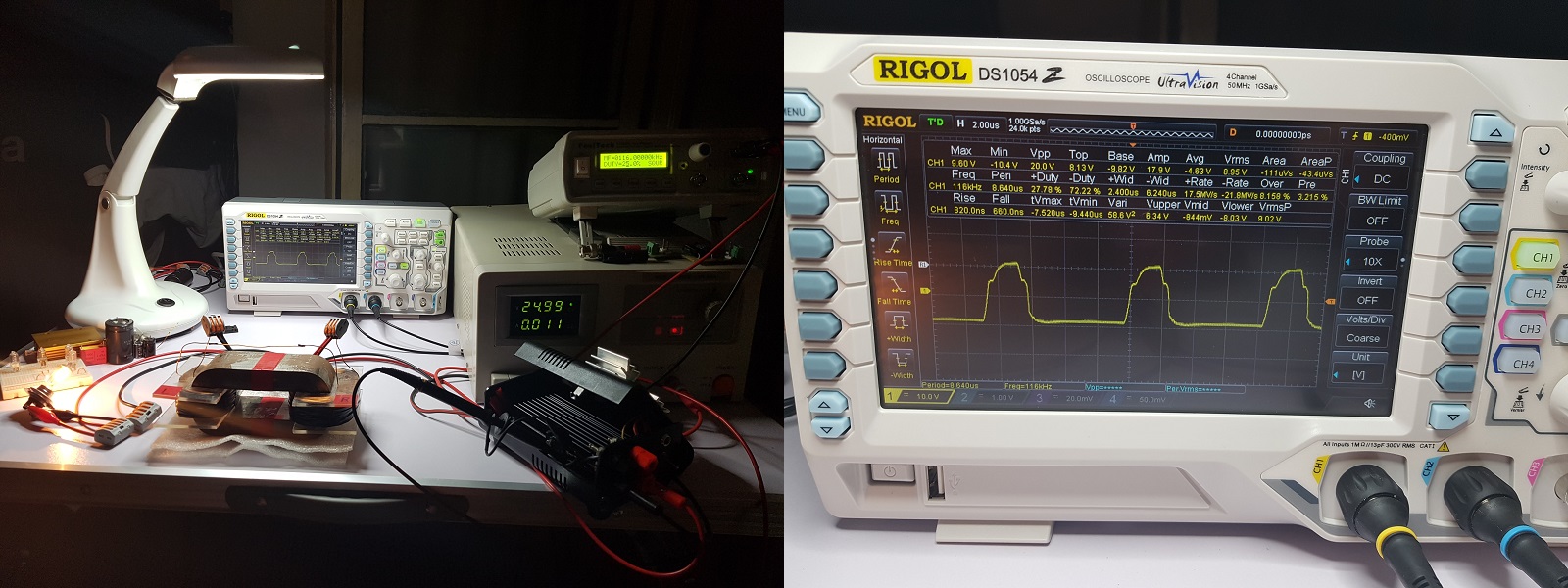
Then I disconnected the yellow probe then moved on to measure the output again: I connected the blue probe to the output, more specific to the light-bulb's pins:
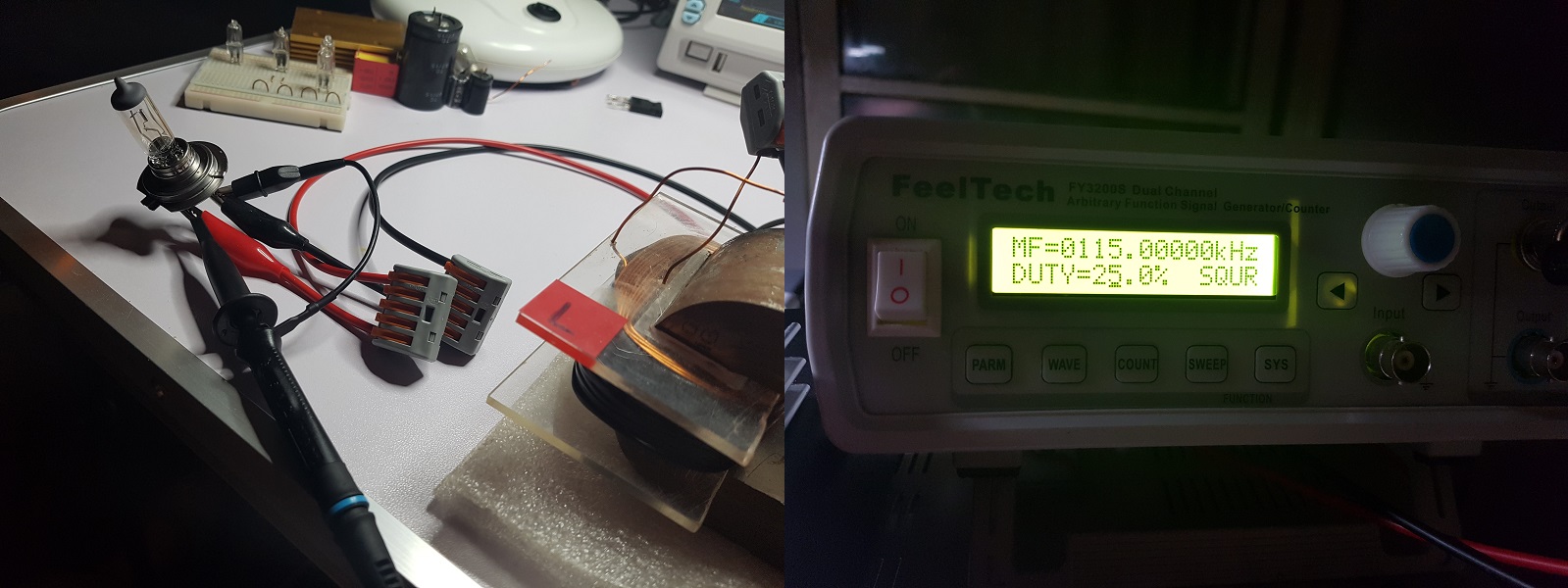
This is the schema of the output measurement:
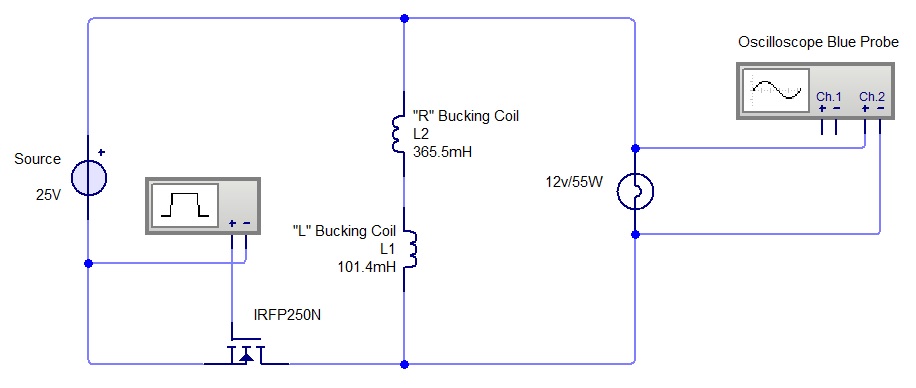
And this is the output measurement, it's the same as I posted it last night - looking like Graham Gunderson's device output:
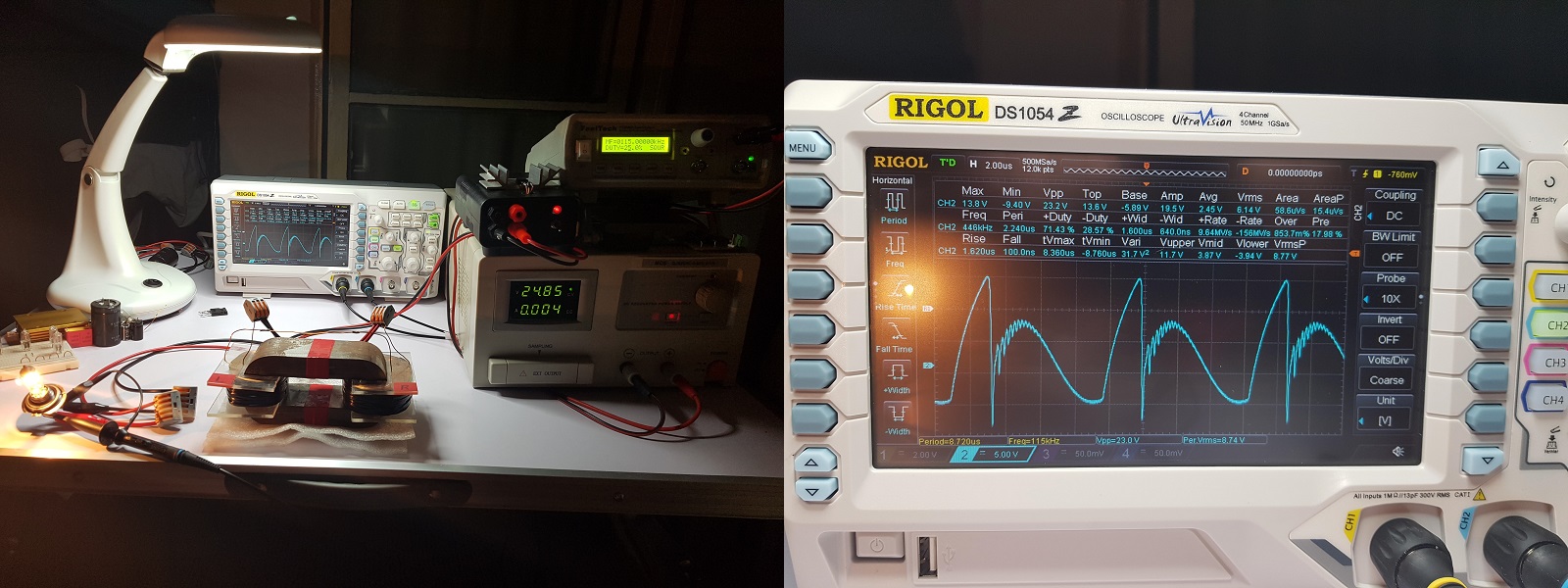
And also for later references I'm putting here again the identical output measurement I've made yesterday but made with a 12V/5W light-bulb on output - notice the Vpp = 164V:

| "If you want to find the secrets of the universe, think in terms of
energy, frequency and
vibration." |
|
|
Nikola Tesla |










